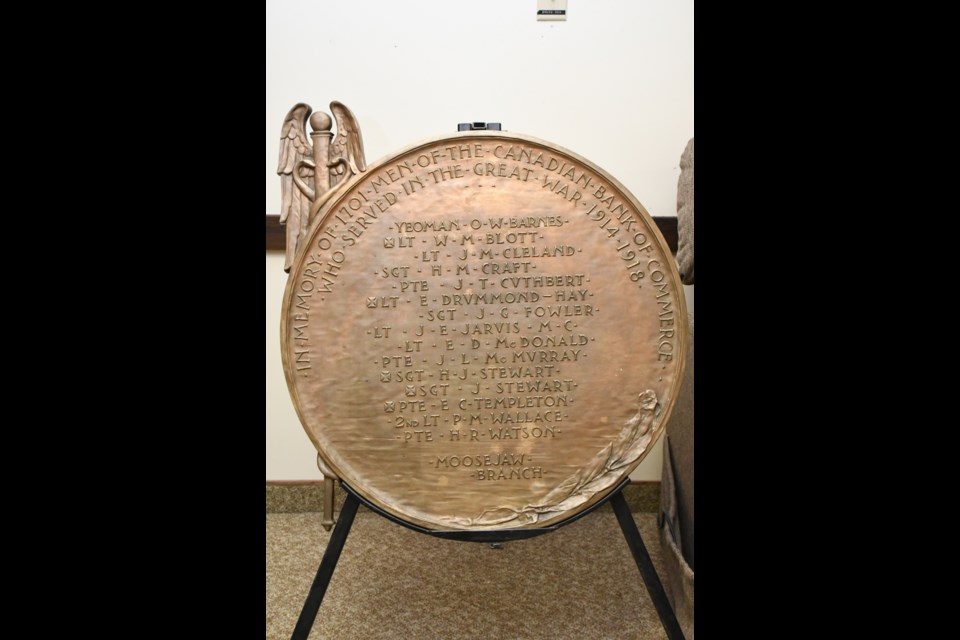The Canadian Imperial Bank of Commerce (CIBC) saw nearly 2,000 employees enlist during the First World War, including men from Moose Jaw such as John Jarvis and Herbert Stewart, who contributed in different ways.
The Canadian Bank of Commerce had 1,701 staff enlist while 518 employees from the smaller Imperial Bank of Canada branches answered the call, with many men receiving honours such as the Victoria Cross and 321 making the ultimate sacrifice.
The commerce branch in London, England, experienced the war first-hand. While the branch readied itself for hostilities, the employees carried on with the day-to-day operations, even during the most trying of circumstances, according to a history project by Moose Jaw’s Royal Canadian Legion Branch No. 59. Meanwhile, Canadian branches faced different challenges during the war.
With so many bank officers entering the military, the banks experienced a staff shortage. By May 1916, 1,50 male employees had enlisted, so the bank turned to women to fill these empty jobs. By war’s end, 500 women were working for the Imperial and 1,446 for the Commerce.
In 1920, the president of the Commerce acknowledged the significant role women played during the war.
“Right nobly did they buckle to their tasks, and through devoted labours, our young men were freed for active service, and the business of a nation at war went on,” he said.
Two of those men were Jarvis and Stewart.
Lt. John Eustace Jarvis was born on Jan. 31, 1892, in Sharnbrook, Bedfordshire, England. He was the sixth son of the Jarvises, who had nine children in total. He was educated at Bedford Grammar School before moving to Canada, where he joined the bank as a clerk in Moose Jaw on Feb. 17, 1912.
After the First World War started on July 28, 1914, Jarvis enlisted at age 22 on either Aug. 16 or Sept. 23 and joined the 60th (Moose Jaw) Rifles Regiment. He went to Britain with the first Canadian contingent but left for Sandhurst military academy to become an officer with the British Expeditionary Force.
He later transferred to the 2nd Battalion (Northamptonshire Regiment) in 1915 after he became a lieutenant.
Some of the main battles in which his unit fought were the Somme in 1916, Passchendaele in 1917, and defensively during the German Advance in March 1918 when he was taken prisoner. He later received the Military Cross for his actions during a battle on March 5, 1917.
“During a raid on the enemy’s trenches, this officer, with his platoon, killed 28 of the enemy and captured 30. He has set at all times a fine example,” the London Gazette said.
Nine members of Jarvis’ family served during the war; four of his brothers fought for Canada, with all four killed in action. This record of patriotism and service caught the attention of the King and Queen, who sent a letter to Jarvis’ mother on Nov. 21, 1918.
“The King and Queen have heard with much interest of the record of your nine sons’ and daughters’ services to their country during the war, and I am commanded to assure that Their Majesties much appreciate this example of patriotism in one family,” the letter said, adding that their majesties were also heartbroken to hear of the death of Mrs. Jarvis’ four other sons.
Meanwhile, Sgt. Herbert James Stewart was born on March 2, 1893, in Ireland, came to Moose Jaw to work with the bank, served with the Canadian Corps Gas Services and died at age 23 on July 5, 1918.
He is buried in the Etaples Military Cemetery in France.




